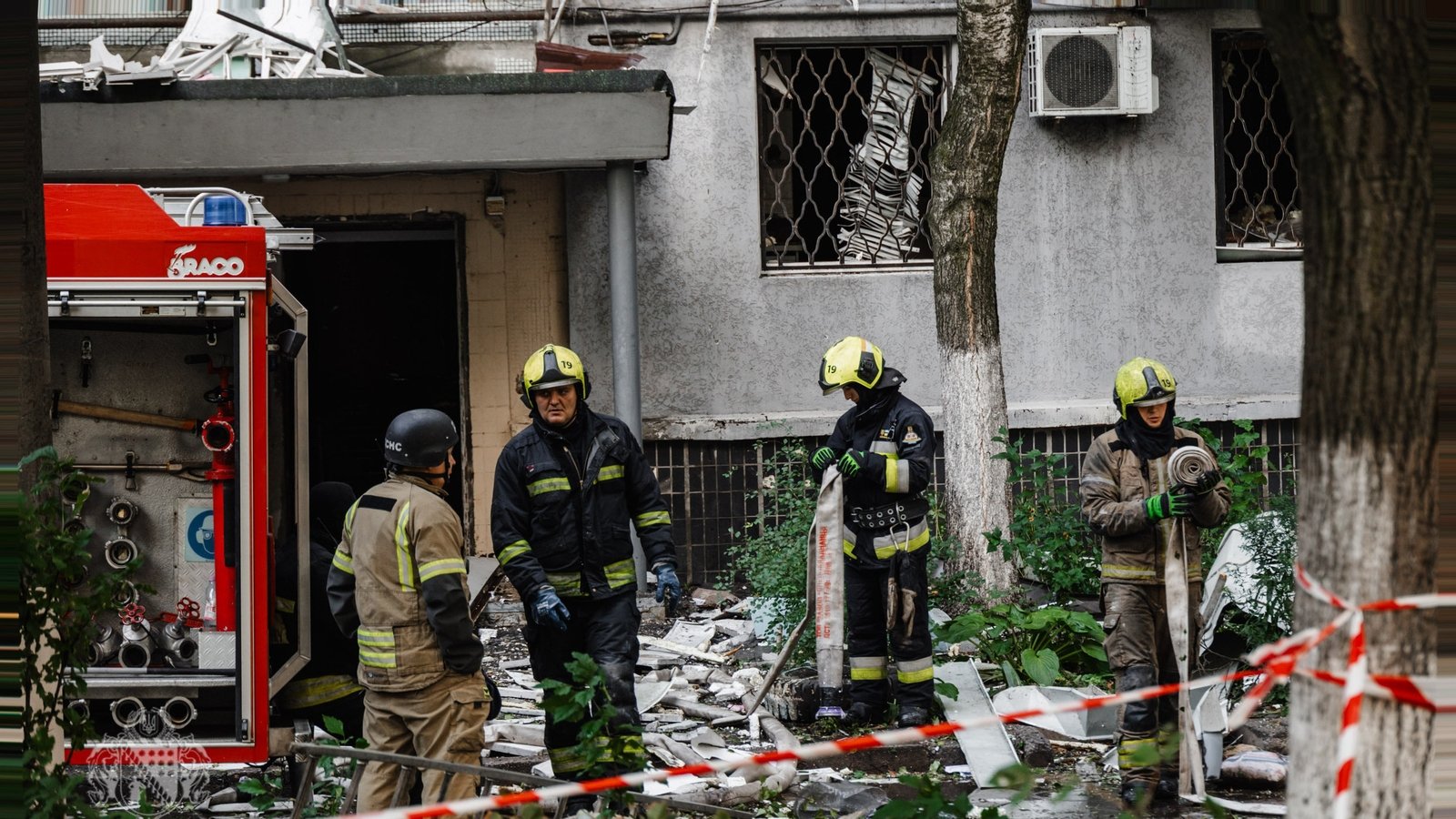By hanad
Copyright jowhar

Night of Wings and Fire: How a New Wave of Drone Swarms Tore Through Ukraine’s Quiet
By the time dawn bled pale over the Dnipro River, neighborhoods that had been humming with life the evening before were ringing with a different soundtrack — the relentless whine of propellers, the staccato rattle of air-defence batteries, the long, hollow clang of an alarm that seems to live in the chest of a whole city.
“I could hear the Shahed coming closer and closer. I knew it was heading for us,” said Yulia Chystokletova, voice still trembling over a phone line from Kyiv. “My child and I were very frightened. It should not be happening in the 21st century. We are all people. Sit down at the negotiating table.”
Numbers that make your head spin
The scale of last night’s assault — as described by Ukrainian officials — reads like a new chapter in modern warfare: roughly 580 drones and about 40 missiles launched across the country. Ukraine’s air force reported shooting down 552 of those drones and 31 missiles, but the strikes still left scars. President Volodymyr Zelensky said three people were killed, dozens were injured, and residential blocks and critical infrastructure suffered heavy damage.
Attacks reported across multiple regions, including Dnipro, Chernihiv and Khmelnytskyi.
In Dnipro a missile reportedly carrying cluster munitions struck an apartment building — at least one person died and 26 were wounded, officials said.
Ukraine said it struck refineries in the Samara and Saratov regions of Russia in retaliatory raids; Russian regional officials reported four dead in Samara.
Independent verification of battlefield claims remains limited — Reuters and other outlets have cautioned that some reports could not be independently confirmed. Still, the human stories are unmistakable: flattened facades, a child’s backpack in the rubble, a landlord trying to account for tenants.
From trickle to flood: the evolution of the drone threat
What is most striking is not only the death toll but the tactic. Early in the war, Russia used dozens of drones in single raids. Last night’s assault — hundreds launched in coordinated waves — reveals a dramatic escalation in resources and operational coordination. These are not lone, errant toy-like machines but organized swarms intended to saturate air defences and strike deep into civilian areas.
“We are living through a watershed moment in conflict technology,” said Dr. Tomasz Kowalczyk, a Warsaw-based security analyst. “Swarms amplify effects: they force defenders to spend interceptors, strain radars, and most perniciously, they convert logistics and small weapons factories into strategic assets. This is asymmetric attrition in the air.”
Ukraine’s response has been to strike back — aiming for fuel depots, refineries, and logistics hubs far across the border. Kyiv’s General Staff said operations hit refineries in Samara and Saratov overnight; the Samara attack was described by regional authorities as one of the deadliest such strikes on Russian soil, with four civilian casualties reported.
On the ground: the quiet bravery
In Dnipro, near where the river widens and the city’s Soviet-era apartment blocks stand shoulder to shoulder, life has folded into a new rhythm. Cafés that once served late coffee now hand out water and bandages. A bricklayer named Oleksandr, who spent the night hauling debris with neighbors, shrugged and said, “We have no choice. We clean up, we bury what’s broken, we cook for those whose homes were hit. This is what people do.”
Olena, who runs a tiny bakery on the corner of a street pocked by shrapnel, kept bringing out loaves to volunteers in reflective vests. “My oven keeps working,” she said, “so I will keep baking. The smell of bread comforts the hurt.”
There are practical, wrenching realities behind the statistics: hospitals filling with the wounded, power lines flickering as transformers take hits, schools closing or moving underground into basements and metro stations that have become makeshift shelters.
Diplomacy, danger, and the risk of spillover
Compounding the threat at home are the geopolitical ripples abroad. Last week three Russian jets were accused of violating Estonian airspace — a claim Moscow denied — and Polish authorities said allied aircraft scrambled this morning after strikes neared NATO’s eastern flank. Officials say Polish and allied fighter jets were patrolling to safeguard Polish airspace as debris and drones traversed skies near the border.
President Zelensky announced he plans to meet US President Donald Trump on the sidelines of the upcoming United Nations General Assembly. “I will discuss security guarantees and sanctions,” Zelensky said, underscoring Kyiv’s insistence that Western-backed protection is essential to prevent future attacks.
“If Western troops were to deploy in Ukraine, Moscow has warned they would become legitimate targets,” noted Dr. Kowalczyk. “That is the grim chessboard — every move shifts thresholds for action and danger.”
Weapons, law, and moral lines
One detail that has provoked particular alarm is the reported use of a missile with cluster munitions in a residential area. Cluster munitions are banned under the Convention on Cluster Munitions, a treaty signed by more than 100 countries; their use has devastating long-term effects, scattering bomblets that can maim civilians months and years after conflict subsides.
“Those are weapons designed to terrorize populations,” said Mariana Petrova, a humanitarian aid coordinator working with displaced families in central Ukraine. “Even if a cluster munition hits a field, children could find remnants later. The human cost echoes.”
What the world should feel — and do
There are numbers and tidings to digest, but what should stay with us is human. A mother in Kyiv clutching her sleeping child, a café owner kneading dough at dawn, a volunteer directing traffic around rubble. These are faces behind the facts.
So ask yourself: how do we, as distant observers or policymakers, respond to a conflict that is increasingly technological and intimate at once? Do we accept drone swarms as the new normal or marshal coordinated action — humanitarian corridors, tighter export controls on drone components, stronger air-defence aid to cities under threat?
For Ukrainians, the calculus is simple and immediate: survive the night, clear the glass, tend the wounded, preserve some small measure of normalcy. For the rest of the world, the question is whether we will treat this as a distant headline or a test of collective responsibility.
As smoke still curled into the morning, Zelensky’s words cut through the ash: “All night, Ukraine was under a massive attack. Every such strike is not a military necessity but a deliberate strategy to terrorize civilians.” If that is the strategy, then the counter-strategy must be equally human: solidarity, diplomacy, and pragmatic steps to blunt the tools of terror.
And in the months to come, when we read of raids and counterstrikes and diplomatic posturing at international gatherings, perhaps we will also remember the smell of fresh bread in a bakery on a shattered street — and the people who, despite everything, keep baking.



